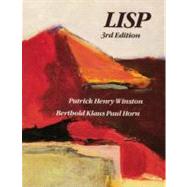
Well-known author Patrick Henry Winston teaches computer science and directs the Artificial Intelligence Laboratory at theMassachusetts Institute of Technology.
0201083191AB04062001
(NOTE: Each chapter ends with a Summary.)
TABLE OF CONTENTS.
1. Understanding Symbol Manipulation.
The New copy of this book will include any supplemental materials advertised. Please check the title of the book to determine if it should include any access cards, study guides, lab manuals, CDs, etc.
The Used, Rental and eBook copies of this book are not guaranteed to include any supplemental materials. Typically, only the book itself is included. This is true even if the title states it includes any access cards, study guides, lab manuals, CDs, etc.